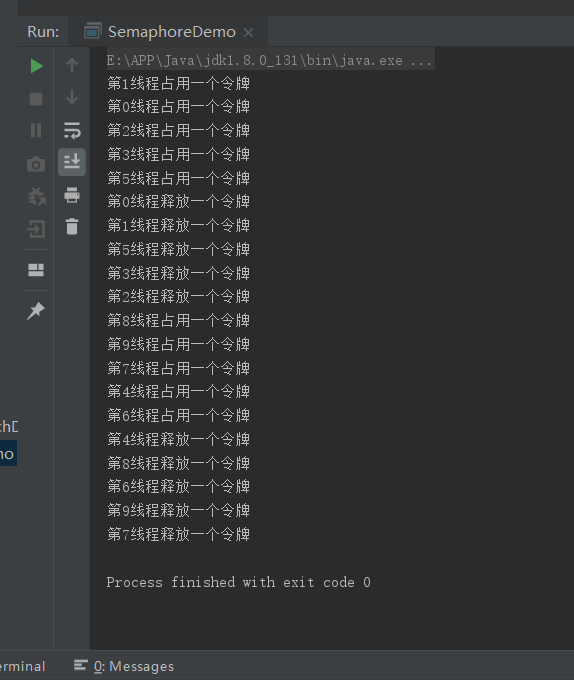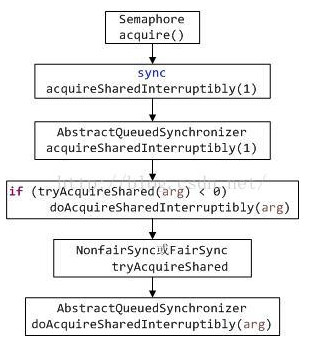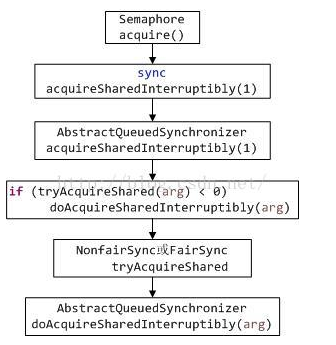JUC阻塞队列之BlockedQueue(七)
一.阻塞队列
阻塞队列是一个队列,它最大的特点就是阻塞的线程满足条件就会被自动唤醒,不需要我们人为的判断。
- 当队列为空时,从队列中获取元素的操作就会被阻塞;
- 当队列为满时,从队列中添加元素的操作就会被阻塞。

二.阻塞队列的好处
之前总结的线程间通信,需要判断对应的值,一个生产者与一个消费者,在判断状态的时候需要加一个标志类,还需要控制线程。而阻塞队列在某些情况会挂起<暂停>线程(阻塞),满足条件,就会被自动的唤起
java中阻塞队列的方法如下:

BlockQueue的源码:
public interface BlockingQueue<E> extends Queue<E> {
//增加一个元索 如果队列已满,则抛出一个IIIegaISlabEepeplian异常
boolean add(E e);
//添加一个元素并返回true 如果队列已满,则返回false
boolean offer(E e);
//添加一个元素 如果队列满,则阻塞
void put(E e) throws InterruptedException;
boolean offer(E e, long timeout, TimeUnit unit)
throws InterruptedException;
//移除并返回队列头部的元素 如果队列为空,则阻塞
E take() throws InterruptedException;
//移除并返问队列头部的元素 如果队列为空,则返回null
E poll(long timeout, TimeUnit unit)
throws InterruptedException;
//剩余容量
int remainingCapacity();
//移除并返回队列头部的元素 如果队列为空,则抛出一个NoSuchElementException异常
boolean remove(Object o);
public boolean contains(Object o);
//一次性从BlockingQueue获取所有可用的数据对象并转移到参数集合中
int drainTo(Collection<? super E> c);
int drainTo(Collection<? super E> c, int maxElements);
}
可以看到,BlockQueue提供了很多不同于其他集合的方法。下面是它的子类:

我们随便选一个ArrayBlockQueue来探索一下它是怎么做到阻塞的。先看看它的三个构造方法:
public ArrayBlockingQueue(int capacity) {
this(capacity, false);
}
public ArrayBlockingQueue(int capacity, boolean fair) {
if (capacity <= 0)
throw new IllegalArgumentException();
//初始化一个数组
this.items = new Object[capacity];
//重入锁
lock = new ReentrantLock(fair);
//下面初始化的是两个队列
notEmpty = lock.newCondition();
notFull = lock.newCondition();
}
public ArrayBlockingQueue(int capacity, boolean fair, Collection<? extends E> c) { this(capacity, fair); final ReentrantLock lock = this.lock; lock.lock(); // Lock only for visibility, not mutual exclusion try { int i = 0; try { for (E e : c) { checkNotNull(e); items[i++] = e; } } catch (ArrayIndexOutOfBoundsException ex) { throw new IllegalArgumentException(); } count = i; putIndex = (i == capacity) ? 0 : i; } finally { lock.unlock(); } }
我们关注的重点当然是第三个构造方法,此处用到了lock锁来把一个普通的集合转移到ArrayBlockQueue中。ArrayBlockQueue的初始化是在第二个构造方法中完成的。需要注意的是,ArrayBlockQueue内部存储对象的方式是通过Object数组实现的。
不难想象,构造方法就已经用lock锁来达到安全的目的了,那么,其他的阻塞相关方法也肯定离不开lock锁的影子了。我们带着这个flag继续往下走。先来看看offer()方法和put()方法,发现和我们猜想的一样:
该方法在ArrayBlockQueue中有两个重载方法offer(E e, long timeout, TimeUnit unit)和offer(E e)。
将指定的元素插入到此队列的尾部(如果立即可行且不会超过该队列的容量),在成功时返回 true,如果此队列已满,则返回 false。前者与后者的主要区别在于,如果队列中没有可用空间,可以设置一定的等待时间,等待可用空间。
public boolean offer(E e) {
checkNotNull(e);
final ReentrantLock lock = this.lock;
lock.lock();
try {
//如果长度等于数组长度表示已经满了
if (count == items.length)
return false;
else {
enqueue(e);
return true;
}
} finally {
lock.unlock();
}
}
将指定的元素插入到队列的尾部,如果有可用空间直接插入,如果没有可用空间,调用condition.await()方法等待,直到被唤醒,然后插入元素。
public void put(E e) throws InterruptedException {
checkNotNull(e);
final ReentrantLock lock = this.lock;
//这种锁可以中断
lock.lockInterruptibly();
try {
while (count == items.length)
notFull.await();
//可以跟进
enqueue(e);
} finally {
lock.unlock();
}
}
public E take() throws InterruptedException {
final ReentrantLock lock = this.lock;
lock.lockInterruptibly();
try {
while (count == 0)
notEmpty.await();
return dequeue();
} finally {
lock.unlock();
}
}
public E poll() {
final ReentrantLock lock = this.lock;
lock.lock();
try {
return (count == 0) ? null : dequeue();
} finally {
lock.unlock();
}
}
private void enqueue(E x) {
// assert lock.getHoldCount() == 1;
// assert items[putIndex] == null;
final Object[] items = this.items;
//此处putIndex可以当成游标
items[putIndex] = x;
//当数据满了,游标会恢复为0
if (++putIndex == items.length)
putIndex = 0;
//队列中元素个数
count++;
//唤醒
notEmpty.signal();
}
如果插入元素成功,返回true,如果插入失败抛出异常IllegalStateException(“Queue full”)。
public boolean add(E e) {
if (offer(e))
return true;
else
throw new IllegalStateException("Queue full");
}
出队列方法:
该方法也有两个重载方法poll(long timeout, TimeUnit unit)和poll(),从队列头部移除一个元素,前者与后者的区别在于,如果队列中没有可以移除的元素,前者会等待一定时间,然后执行移除方法。
public E poll() {
final ReentrantLock lock = this.lock;
lock.lock();
try {
return (count == 0) ? null : dequeue();//如果没有可以移出元素,返回null,否则执行dequeue()方法
} finally {
lock.unlock();
}
}
public E poll(long timeout, TimeUnit unit) throws InterruptedException {
long nanos = unit.toNanos(timeout);
final ReentrantLock lock = this.lock;
lock.lockInterruptibly();
try {
while (count == 0) {
if (nanos <= 0)
return null;
nanos = notEmpty.awaitNanos(nanos);//如果没有可以移出元素,调用condition的线程等待的方法,等待一定时间
}
return dequeue();
} finally {
lock.unlock();//最后释放锁lock
}
}
private E dequeue() {
// assert lock.getHoldCount() == 1;
// assert items[takeIndex] != null;
final Object[] items = this.items;
@SuppressWarnings("unchecked")
E x = (E) items[takeIndex];
items[takeIndex] = null;
if (++takeIndex == items.length)
takeIndex = 0;
count--;
if (itrs != null)
itrs.elementDequeued();
notFull.signal();//最后唤醒其他等待的线程
return x;
}
获取并移除此队列的头部。take()和poll()的区别在于,如果队列中没有可移除元素,take()会一直等待,而poll()可设置直接返回null或者等待一定时间。
public E take() throws InterruptedException {
final ReentrantLock lock = this.lock;
lock.lockInterruptibly();
try {
while (count == 0)
notEmpty.await();//如果队列中没有元素,该线程一直处于阻塞状态
return dequeue();
} finally {
lock.unlock();
}
}
分析完了上面的源码,我们以一个小Demo来结束上面的话题,我们以积分分发和消费为例来随便搞个例子
public class User {
private String name;
public User(String name) {
this.name = name;
}
@Override
public String toString() {
return "User{" +
"name='" + name + '\'' +
'}';
}
}
public class UserService {
private final ExecutorService executorService= Executors.newSingleThreadExecutor();
ArrayBlockingQueue<User> arrayBlockingQueue=new ArrayBlockingQueue(10);
{
init();
}
public void init(){ //不断消费队列的线程
executorService.execute(()->{
while(true){
try {
User user=arrayBlockingQueue.take(); //阻塞式
System.out.println("发送优惠券给:"+user);
} catch (InterruptedException e) {
e.printStackTrace();
}
}
});
}
public boolean register(){
User user=new User("用户A");
addUser(user);
//发送积分.
try {
arrayBlockingQueue.put(user);
} catch (InterruptedException e) {
e.printStackTrace();
}
return true;
}
private void addUser(User user){
System.out.println("添加用户:"+user);
}
public static void main(String[] args) {
new UserService().register();
}
}
二.CountDownLatch
CountDownLatch一般用作多线程倒计时计数器,强制它们等待其他一组(CountDownLatch的初始化决定)任务执行完成。- 有一点要说明的是
CountDownLatch初始化后计数器值递减到0的时候,不能再复原的,这一点区别于Semaphore,Semaphore是可以通过release操作恢复信号量的。
g下面场景,我们阻塞主线程,每运行一个子线程CountDownLatch就会减1,只有减到0时主线程才会运行
public class CountDownLatchDemo {
public static void main(String[] args) throws InterruptedException {
CountDownLatch countDownLatch=new CountDownLatch(3);
new Thread(()->{
System.out.println(Thread.currentThread().getName()+"->begin");
countDownLatch.countDown(); //初始值-1 =3-1=2;
System.out.println(Thread.currentThread().getName()+"->end");
},"t1").start();
new Thread(()->{
System.out.println(Thread.currentThread().getName()+"->begin");
countDownLatch.countDown(); //2-1=1;
System.out.println(Thread.currentThread().getName()+"->end");
},"t2").start();
new Thread(()->{
System.out.println(Thread.currentThread().getName()+"->begin");
countDownLatch.countDown(); //1-1=1;
System.out.println(Thread.currentThread().getName()+"->end");
},"t3").start();
countDownLatch.await(); //阻塞Main线程
System.out.println("当CoutDownLatch计算为0时主线程唤醒");
}
}
CountDownLatch和ReentrantLock一样,内部使用Sync继承AQS。构造函数很简单地传递计数值给Sync,并且设置了state。
Sync(int count) {
setState(count);
}
AQS的state,这是一个由子类决定含义的“状态”。对于ReentrantLock来说,state是线程获取锁的次数;对于CountDownLatch来说,则表示计数值的大小。
1.阻塞线程
接着来看await方法,直接调用了AQS的acquireSharedInterruptibly。
public void await() throws InterruptedException {
sync.acquireSharedInterruptibly(1);
}
public final void acquireSharedInterruptibly(int arg)
throws InterruptedException {
if (Thread.interrupted())
throw new InterruptedException();
if (tryAcquireShared(arg) < 0)
doAcquireSharedInterruptibly(arg);
}
首先尝试获取共享锁,实现方式和独占锁类似,由CountDownLatch实现判断逻辑。
protected int tryAcquireShared(int acquires) {
// 此时的getState我们已经初始值了不为0,返回-1
return (getState() == 0) ? 1 : -1;
}
返回1代表获取成功,返回-1代表获取失败。如果获取失败,需要调用doAcquireSharedInterruptibly:
private void doAcquireSharedInterruptibly(int arg)
throws InterruptedException {
//和以前的一样创建AQS共享队列,有了前几篇幅的积累看这里已经很简单了
final Node node = addWaiter(Node.SHARED);
boolean failed = true;
try {
//又是自旋
for (;;) {
final Node p = node.predecessor();
if (p == head) {
//抢占共享锁
int r = tryAcquireShared(arg);
if (r >= 0) {
//抢到了被唤醒走这里
setHeadAndPropagate(node, r);
p.next = null; // help GC
failed = false;
return;
}
}
//这个判断在以前篇幅有讲过这里就不讲了,就是将节点设置成SIGNAL节点,表示可以正常唤醒的节点
if (shouldParkAfterFailedAcquire(p, node) &&
//这里是挂起操作
parkAndCheckInterrupt())
throw new InterruptedException();
}
} finally {
if (failed)
cancelAcquire(node);
}
}
doAcquireSharedInterruptibly的逻辑和独占功能的acquireQueued基本相同,阻塞线程的过程是一样的。不同之处:
- 创建的Node是定义成共享的(Node.SHARED);
- 被唤醒后重新尝试获取锁,不只设置自己为head,还需要通知其他等待的线程。(重点看后文释放操作里的setHeadAndPropagate)
2.释放操作
看countDownLatch.countDown();
public void countDown() {
sync.releaseShared(1);
}
countDown操作实际就是释放锁的操作,每调用一次,计数值减少1:
public final boolean releaseShared(int arg) {
if (tryReleaseShared(arg)) {
//成立表示释放锁了,可以走唤醒操作喽
doReleaseShared();
return true;
}
return false;
}
同样是首先尝试释放锁,具体实现在CountDownLatch中:
protected boolean tryReleaseShared(int releases) {
// Decrement count; signal when transition to zero
for (;;) {
//每调一次线程就会减1
int c = getState();
if (c == 0)
return false;
int nextc = c-1;
//CAS是防止多线程访问,所以直接跟内存交互
if (compareAndSetState(c, nextc))
return nextc == 0;
}
}
死循环加上cas的方式保证state的减1操作,当计数值等于0,代表所有子线程都执行完毕,被await阻塞的线程可以唤醒了,下一步调用doReleaseShared:
private void doReleaseShared() {
for (;;) {
Node h = head;
if (h != null && h != tail) {
int ws = h.waitStatus;
if (ws == Node.SIGNAL) {
//1
if (!compareAndSetWaitStatus(h, Node.SIGNAL, 0))
continue; // loop to recheck cases
unparkSuccessor(h);
}
//2
else if (ws == 0 &&
!compareAndSetWaitStatus(h, 0, Node.PROPAGATE))
continue; // loop on failed CAS
}
if (h == head) // loop if head changed
break;
}
}
标记1里,头节点状态如果SIGNAL,则状态重置为0,并调用unparkSuccessor唤醒下个节点。
标记2里,被唤醒的节点状态会重置成0,在下一次循环中被设置成PROPAGATE状态,代表状态要向后传播。
private void unparkSuccessor(Node node) {
int ws = node.waitStatus;
if (ws < 0)
compareAndSetWaitStatus(node, ws, 0);
Node s = node.next;
if (s == null || s.waitStatus > 0) {
s = null;
//无效节点就跳过去
for (Node t = tail; t != null && t != node; t = t.prev)
if (t.waitStatus <= 0)
s = t;
}
if (s != null)
//唤醒当前头节点
LockSupport.unpark(s.thread);
}
在唤醒线程的操作里,分成三步:
- 处理当前节点:非CANCELLED状态重置为0;
- 寻找下个节点:如果是CANCELLED状态,说 明节点中途溜了,从队列尾开始寻找排在最前还在等着的节点
- 唤醒:利用LockSupport.unpark唤醒下个节点里的线程。
线程是在doAcquireSharedInterruptibly里被阻塞的,唤醒后调用到setHeadAndPropagate。
private void setHeadAndPropagate(Node node, int propagate) {
//将当前节点变成头节点,前置节点设为空
Node h = head;
setHead(node);
if (propagate > 0 || h == null || h.waitStatus < 0 ||
(h = head) == null || h.waitStatus < 0) {
Node s = node.next;
if (s == null || s.isShared())
doReleaseShared();
}
}
setHead设置头节点后,再判断一堆条件,取出下一个节点,如果也是共享类型,进行doReleaseShared释放操作。下个节点被唤醒后,重复上面的步骤,达到共享状态向后传播。
要注意,await操作看着好像是独占操作,但它可以在多个线程中调用。当计数值等于0的时候,调用await的线程都需要知道,所以使用共享锁。
限定时间的await
CountDownLatch的await方法还有个限定阻塞时间的版本.
public boolean await(long timeout, TimeUnit unit)
throws InterruptedException {
return sync.tryAcquireSharedNanos(1, unit.toNanos(timeout));
}
跟踪代码,最后来看doAcquireSharedNanos方法,和上文介绍的doAcquireShared逻辑基本一样,不同之处是加了time字眼的处理。
private boolean doAcquireSharedNanos(int arg, long nanosTimeout)
throws InterruptedException {
if (nanosTimeout <= 0L)
return false;
final long deadline = System.nanoTime() + nanosTimeout;
final Node node = addWaiter(Node.SHARED);
boolean failed = true;
try {
for (;;) {
final Node p = node.predecessor();
if (p == head) {
int r = tryAcquireShared(arg);
if (r >= 0) {
setHeadAndPropagate(node, r);
p.next = null; // help GC
failed = false;
return true;
}
}
nanosTimeout = deadline - System.nanoTime();
if (nanosTimeout <= 0L)
return false;
if (shouldParkAfterFailedAcquire(p, node) &&
nanosTimeout > spinForTimeoutThreshold)
LockSupport.parkNanos(this, nanosTimeout);
if (Thread.interrupted())
throw new InterruptedException();
}
} finally {
if (failed)
cancelAcquire(node);
}
}
进入方法时,算出能够执行多久的deadline,然后在循环中判断时间。注意到代码中间有句:
nanosTimeout > spinForTimeoutThreshold
static final long spinForTimeoutThreshold = 1000L;
spinForTimeoutThreshold写死了1000ns,这就是所谓的自旋操作。当超时在1000ns内,让线程在循环中自旋,否则阻塞线程。
三. semaphore(信号灯)
Semaphore是一种基于计数的信号量。它可以设定一个阈值,基于此,多个线程竞争获取许可信号,做完自己的申请后归还,超过阈值后,线程申请许可信号将会被阻塞。Semaphore可以用来构建一些对象池,资源池之类的,比如数据库连接池,我们也可以创建计数为1的Semaphore,将其作为一种类似互斥锁的机制,这也叫二元信号量,表示两种互斥状态。它的用法如下:
public class SemaphoreDemo {
public static void main(String[] args) {
Semaphore semaphore=new Semaphore(5); //令牌数 state=5
for(int i=0;i<10;i++){
new Car(semaphore,i).start();
}
}
static class Car extends Thread{
Semaphore semaphore;
int num;
public Car(Semaphore semaphore, int num) {
this.semaphore = semaphore;
this.num = num;
}
@Override
public void run() {
try {
semaphore.acquire(); //5-1 获得令牌.(没拿到令牌,会阻塞,拿到了就可以往下执行)
System.out.println("第"+num+"线程占用一个令牌");
Thread.sleep(3000);
System.out.println("第"+num+"线程释放一个令牌");
semaphore.release(); //释放令牌
} catch (InterruptedException e) {
e.printStackTrace();
}
}
}
}

同ReentrantLock一样,Semaphore内部也是依靠一个继承自AbstractQueuedSynchronizer的Sync抽象类型的类成员变量sync来实现主要功能的,如下:
/** All mechanics via AbstractQueuedSynchronizer subclass */
private final Sync sync;
同时,Semaphore也是由公平性和非公平性两种实现模式,对应Sync的两个实现类FairSync和NonfairSync。而acquire()方法实现的主要逻辑为:


它的主要处理流程是:
1、通过Semaphore的acquire()方法申请许可;
2、调用类成员变量sync的acquireSharedInterruptibly(1)方法处理,实际上是父类AbstractQueuedSynchronizer的acquireSharedInterruptibly()方法处理;
3、AbstractQueuedSynchronizer的acquireSharedInterruptibly()方法会先在当前线程未中断的情况下先调用tryAcquireShared()方法尝试获取许可,未获取到则调用doAcquireSharedInterruptibly()方法将当前线程加入等待队列。acquireSharedInterruptibly()代码如下:
public final void acquireSharedInterruptibly(int arg)
throws InterruptedException {
if (Thread.interrupted())
throw new InterruptedException();
//前面的文章中有说明过
if (tryAcquireShared(arg) < 0)
doAcquireSharedInterruptibly(arg);
}



 浙公网安备 33010602011771号
浙公网安备 33010602011771号